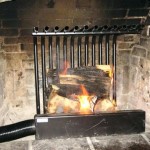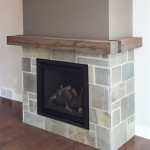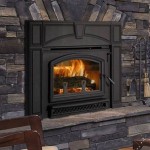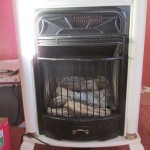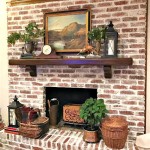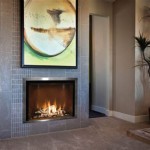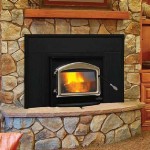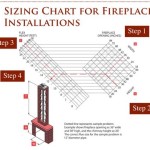Vintage Outdoor Fireplaces: A Timeless Addition to Outdoor Living Spaces
Vintage outdoor fireplaces offer a unique blend of functionality and aesthetic appeal, transforming outdoor spaces into inviting havens for relaxation and entertainment. Unlike their modern counterparts, vintage fireplaces often showcase intricate designs, durable construction, and a tangible connection to a bygone era. Their enduring popularity stems from their ability to evoke feelings of nostalgia while providing practical warmth and ambiance. This article explores the allure of vintage outdoor fireplaces, delving into their defining characteristics, benefits, considerations for acquisition and restoration, and their impact on contemporary outdoor living.
The term "vintage" in this context generally refers to fireplaces constructed several decades ago, typically before the widespread adoption of modern materials and manufacturing techniques. These fireplaces are often characterized by their use of robust materials such as brick, stone, or cast iron, and are distinguished by their handcrafted details and unique architectural styles. They represent a period when craftsmanship was highly valued and products were built to last, contributing to their enduring value and appeal.
Beyond their functional purpose as a heat source, vintage outdoor fireplaces hold a significant aesthetic value. They act as focal points, enhancing the visual appeal of patios, gardens, and outdoor living areas. Their presence can transform a simple backyard into a sophisticated and inviting space, reminiscent of classic estates and historical landscapes. The design variations, ranging from rustic stone structures to elegantly crafted brick designs, allow homeowners to select a fireplace that complements their specific architectural style and personal preferences.
Vintage outdoor fireplaces represent a sustainable choice, often repurposed and restored rather than newly manufactured. This approach reduces the demand for new resources and minimizes environmental impact. By choosing a vintage fireplace, homeowners contribute to the preservation of historical artifacts and demonstrate a commitment to environmentally conscious living. The durability of these structures also translates to longevity, making them a worthwhile investment compared to less robust modern alternatives.
Key Characteristics of Vintage Outdoor Fireplaces
Several key characteristics distinguish vintage outdoor fireplaces from their modern counterparts. These factors contribute to their unique aesthetic, durability, and overall appeal.
Material Composition: Vintage fireplaces are predominantly constructed from durable materials such as brick, stone (including fieldstone, limestone, and granite), and cast iron. The choice of material often reflects the regional availability and architectural styles prevalent during the fireplace's era of construction. Brick fireplaces, for example, may exhibit variations in color, texture, and bonding patterns, indicating the age and origin of the bricks. Stone fireplaces frequently showcase the natural beauty of locally sourced stone, adding a rustic and organic element to the outdoor space. Cast iron fireplaces are known for their intricate detailing and robust construction, often featuring decorative elements and ornate designs.
Architectural Style: Vintage outdoor fireplaces encompass a diverse range of architectural styles, reflecting the design trends and cultural influences of their time. Some common styles include:
- Rustic: Characterized by the use of natural stone, rough-hewn timbers, and a simple, unadorned design. These fireplaces blend seamlessly with natural landscapes and evoke a sense of warmth and authenticity.
- Craftsman: Featuring clean lines, exposed brickwork, and a focus on handcrafted details. Craftsman-style fireplaces often incorporate built-in seating or storage areas, enhancing their functionality and visual appeal.
- Georgian: Distinguished by symmetrical proportions, elegant brickwork, and classical detailing. Georgian fireplaces often include decorative mantels, pilasters, and other architectural embellishments, adding a touch of sophistication to the outdoor space.
- Art Deco: Featuring geometric patterns, stylized motifs, and a sense of glamour. Art Deco fireplaces often incorporate materials such as polished stone, metal accents, and decorative tiles, reflecting the bold and innovative design trends of the 1920s and 1930s.
Handcrafted Details: Unlike mass-produced modern fireplaces, vintage fireplaces often showcase handcrafted details that add to their unique character and value. These details may include:
- Intricate Brickwork: Elaborate bonding patterns, decorative brick accents, and carefully crafted arches.
- Custom Stonework: Precisely fitted stones, artful arrangements, and unique textural variations.
- Ornate Cast Iron Elements: Decorative firebacks, grates, and andirons with intricate designs and handcrafted details.
- Hand-Carved Mantels: Wooden or stone mantels featuring intricate carvings and personalized details.
Benefits of Owning a Vintage Outdoor Fireplace
Investing in a vintage outdoor fireplace offers a multitude of benefits beyond its aesthetic appeal. These advantages include enhanced ambiance, increased property value, and a sustainable approach to outdoor living.
Creating Atmosphere and Ambiance: The presence of a vintage fireplace transforms outdoor spaces into inviting and comfortable retreats. The crackling fire, the warm glow, and the aroma of burning wood create a relaxing and inviting atmosphere that encourages social interaction and relaxation. A vintage fireplace provides a focal point for outdoor gatherings, creating a sense of intimacy and warmth that enhances the overall experience.
Enhancing Property Value: A well-maintained vintage outdoor fireplace can significantly enhance the value of a property. It adds a unique architectural element that distinguishes the home from others, making it more appealing to potential buyers. The perceived value stems from the fireplace's aesthetic appeal, historical significance, and contribution to the overall outdoor living space. Properly restored vintage fireplaces are often considered valuable assets, reflecting a commitment to craftsmanship and historical preservation.
Sustainable and Eco-Friendly Choice: Choosing a vintage fireplace over a new construction is a sustainable choice that reduces environmental impact. Repurposing existing structures minimizes the need for new resource extraction, manufacturing processes, and transportation, all of which contribute to carbon emissions and environmental degradation. By restoring and maintaining a vintage fireplace, homeowners extend its lifespan and reduce waste, promoting a more sustainable approach to outdoor living. Furthermore, using locally sourced wood for fuel supports local economies and minimizes the carbon footprint associated with transportation.
Considerations for Acquiring and Restoring Vintage Outdoor Fireplaces
Acquiring and restoring a vintage outdoor fireplace requires careful planning and consideration. Potential buyers should assess the structural integrity of the fireplace, research its history and architectural style, and develop a comprehensive restoration plan to ensure its longevity and safety.
Assessing Structural Integrity: Before purchasing or restoring a vintage fireplace, a thorough inspection is essential to assess its structural integrity. This inspection should focus on:
- Cracks and Damage: Look for cracks in the brickwork, stone, or cast iron, as well as any signs of spalling (surface erosion) or structural damage.
- Stability: Ensure that the fireplace is stable and that there are no signs of leaning or settling. Check the foundation for cracks or erosion.
- Chimney Condition: Inspect the chimney for cracks, obstructions, or damage to the flue liner. A damaged chimney can pose a significant fire hazard.
- Water Damage: Look for signs of water damage, such as staining, mold growth, or rust, which can compromise the structural integrity of the fireplace.
Researching History and Style: Understanding the history and architectural style of the fireplace can inform the restoration process and ensure that repairs are consistent with its original design. Researching the fireplace's origins can reveal valuable information about the materials used, the construction techniques employed, and any unique features that should be preserved. Local historical societies, libraries, and online resources can provide valuable insights into the history of the fireplace and its surrounding area. This knowledge can help guide the restoration process and ensure that the fireplace retains its historical character and aesthetic authenticity.
Developing a Restoration Plan: A comprehensive restoration plan should outline the steps required to repair, clean, and maintain the vintage fireplace. This plan should include:
- Cleaning: Removing dirt, grime, and soot from the fireplace's surface using appropriate cleaning methods and materials.
- Repairing: Addressing any structural damage, such as cracks or spalling, using compatible materials and techniques.
- Repointing: Replacing deteriorated mortar joints to ensure the fireplace's structural integrity and weather resistance.
- Sealing: Applying a protective sealant to prevent water damage and prolong the lifespan of the fireplace.
- Chimney Inspection and Cleaning: Hiring a qualified chimney sweep to inspect and clean the chimney to ensure safe and efficient operation.
Restoration efforts should prioritize preserving as much of the original material and design as possible. When replacement is necessary, using materials that are consistent with the fireplace's original construction is recommended. Consulting with experienced restoration professionals can provide valuable guidance and ensure that the restoration is carried out in a safe and effective manner.
Vintage outdoor fireplaces represent a unique and valuable addition to any outdoor living space. Their aesthetic appeal, historical significance, and sustainable nature make them a worthwhile investment for homeowners seeking to enhance their property and create an inviting outdoor retreat. By carefully considering the factors outlined in this article, potential buyers and restorers can ensure that their vintage fireplace provides years of enjoyment and adds lasting value to their home.

Mcm Fireplace Brands Is It Really A Malm Atomic Ranch

Fire Pits With Retro Modern Style In A Wide Range Of S Renovation Pit Designs Outdoor

Case Study Vintage Conversion Ecosmart Fire

A Vintage Cone Fireplace Outdoor Wood Patio Malm

Outdoor Fireplaces Making A Statement Brekke Fireplace Pe

The History Of Malm Fireplace How To Care For It
:max_bytes(150000):strip_icc()/antique-brick-x-abe419cbc44b441b815d7bdbe8c256d7.jpg?strip=all)
23 Outdoor Fireplace Ideas For A Glowing Retreat

25 Stylish Ways To Bring Vintage Flair Your Outdoor Living Space Rustic Fireplaces Fireplace

Get Cozy Around Your These Vintage Fireplaces
:max_bytes(150000):strip_icc()/2617701_Winsl_0775-2000-a0849b8fcbf64f8eae21f18a65ff5a1a-aff7a789969c43ea8a9f9363427a6b65.jpg?strip=all)
23 Outdoor Fireplace Ideas For A Glowing Retreat
Related Posts

